The Suggested Repertoire from Around the World for Developing Bands series is a new WASBE program of instructional materials to assist music directors in identifying exceptional works from around the world that are playable by developing musicians.
Each of the selections in this series provides a myriad of musical elements that might be explored and developed within the rehearsal context, but the goal is to present music of artistic merit that aligns most directly to the composer’s unique voice. These are selections that stand out from works written largely for teaching purposes.
Our installments include four-five such works, each to be contributed by WASBE members from throughout the world. Some of the selections will be well known while others will be quite unfamiliar to most – and there will be more than a few older compositions that we hope will be revisited, reacquainted, or discovered anew.
This fifth installment (June 2023) is submitted by WASBE member Joop Boerstoel, former WASBE Board member, Artistic Planning Committee chair, conductor, and teacher from The Netherlands.
Grade 3
Air for Band – (3’.20”) – Bourne Co. Music Publishers
Frank Erickson (USA, 1923 – 1996)
https://www.youtube.com/watch?v=1U4fgTWnBXA
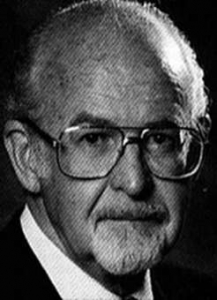
It is not a real new piece, but still useful for many reasons: ‘Air For Band’ by Frank Erickson. Frank William Erickson, born September 1st 1923, and died 21st of October 1996 was an American composer, conductor, arranger, educator and author of band methods. His contribution to the wind band scene is not to be underestimated.
Erickson wrote Air for Band in 1956 and subsequently revised it in 1966. In writing Air for Band, Erickson was preoccupied with creating a piece that young students could successfully perform that was also of educational value. But, it’s even worthful for bands with musicians of all ages. The composition has been a return to certain aspects of music of the Baroque and Classical periods and could be indicated as ‘neo-classic’.
Each line in each voice of this piece is ripe with emotion. Attention to consistent airflow through the phrase is crucial. Each line must have direction, either going to or coming from somewhere. Nothing in this music should be stagnant. Players should “lean” on suspensions and dissonances which are used throughout the piece.
It’s still on my repertoire to use this piece during (church) concerts but also very useful for warming up the band or working on style, phrasing, sound and intonation. It is simple in conception, was one of the first original slow and pretty pieces that was playable by young bands. Many composers later were inspired by this piece to explore phrasing and delicate playing with younger players.
Grade 3
The world of Insects – (8’.00”) – www.ammusic.nl
Tjeerd Nijhof (NED, 1995)
https://www.youtube.com/watch?v=Tiq_1uHKKuM
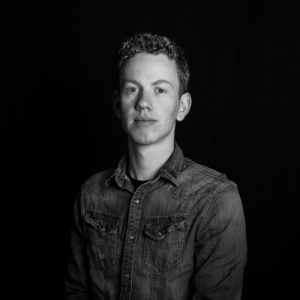
World of Insects is a journey through the painting De Wollewei, the imaginary painting used in the book ‘Erik of het klein insectenboek’ by Dutch author Godfried Bomans. The English translation is named ‘Eric in the Land of the Insects’. Erik, the main character in this book, discovers the magical world of nature and its remarkable inhabitants. This piece is a spherical interpretation of some parts of the book. The opening takes us to the magical world of De Wollewei. We first meet the wasps. Friendly, vain, and almost noble creatures. Then a butterfly flies over. What a beauty. We can feel the romance. It starts like a small thing, but it grows and becomes big and compelling. Finally we meet the burying beetles. Little strange creatures with cynical manners. They enjoy their meal: a dead insect. It’s getting more and more fun, till we fall out of this wonderful world. The curtain closes.
More about the book – in English – can be found here:
https://en.wikipedia.org/wiki/Erik_of_het_klein_insectenboek
The impetus to write the piece begins with the performance of ‘Twents Youth Wind Band’ performance at the 5th Hanze Festival in Zutphen. Here the orchestra won the prize for “best presentation” offered by Musidesk Rijnbrink. The new work to be written was to be part of a complete theater production about the book ‘Eric in the Land of the Insects’.
It’s a grade 3 piece and 8 minutes of length. The piece consists of 4 main movements (scenes), which are played without break. Although written as a composition to be fit in a total theater concept, this composition can be performed separate. Therefore this wonderful piece was also chosen as contest piece for the Dutch National Wind Band Champions, 4th Division.
About the composer:
Born in 1995 in Groenlo (the Netherlands), Tjeerd studied at the Hogeschool voor de Kunsten (College of the Arts) Utrecht, Composition for the Media. During that time, he had the great opportunity to work on projects in Los Angeles, Hamburg and countries like France and South-Korea.
During his time in those different countries, he tried to absorb the different cultures with all their sounds and stylistic gestures. In his work he likes to mix styles and look for new combinations of sounds to tell a new story…” Telling stories in music, that’s what I do.”
Besides his professional job as composer he played trombone in diverse wind bands.
Grade 3
Alligator Alley – (5’.00) – American Composers Forum
Michael Daugherty (USA, 1954)
https://www.youtube.com/watch?v=5y_fBN6WUqw
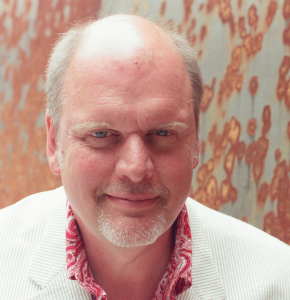
“Alligator Alley” is the nickname for the east-west stretch of Interstate 75 between Naples and Fort Lauderdale that crosses through Florida Everglades National Park. This park is home to many endangered species, one of them being the American alligator.
Alligator Alley is also the title of a wind band score by the American composer Michael Daugherty, a work commissioned in 2003 by the American Composers Forum for their BandQuest series of new pieces written by leading American composers for middle and high school performers. Daughterty sought to write a work that had an educational tie to environmental studies in science.
In the case of “Alligator Alley,” Daugherty had a particular middle-schooler of that time in mind, namely his own daughter who played bassoon in a middle school band. The composition is then also dedicated to his – at that time – 14-year-old daughter, Evelyn. The score has a suggested stage arrangement for percussion placement.
Daugherty’s “Alligator Alley” employs two main themes: the first, a slithery “alligator theme,” is played at the beginning by bassoons. This theme is in 5/4 measure. Quoting the composer: “This theme is in ‘five’ because it brings to mind the four legs and tail of the alligator as it slithers through the Everglades.”
The second, a “hunter’s theme,” is performed by the brass, saxophones and melodic percussion. It represents the hunters and poachers who trap and kill the alligator for profit.
Since its premiere performance on May 14, 2003, by band director Gene Bartley and the kids at Slausen Middle School in Ann Arbor, Michigan, Michael Daugherty’s “Alligator Alley” has slithered its way into the band rooms and onto the music stands of young musicians across the country.
The first time I heard this piece during a guest conducting I did in Italy, together with WASBE member colleague Luca Pasqua and I like the piece right from the first rehearsal.
The instrumentation demands full woodwind section. The brass parts are limited to a maximum of 2 per instrument (f.e. trumpet 1 and 2). The composition asks for a large group of percussion players, although marimba and vibraphone are optional. A good bassoon player is needed get a comfortable and characteristic start of the music.
Michael Daugherty was born in Cedar Rapids, Iowa in 1954. As a young man, Daugherty studied composition with many of the preeminent composers of the 20th century including Pierre Boulez at IRCAM in Paris (1979), Jacob Druckman, Earle Brown, Bernard Rands and Roger Reynolds at Yale (1980-82), and György Ligeti in Hamburg (1982-84). Daugherty was also an assistant to jazz arranger Gil Evans in New York from 1980-82. In 1991, Daugherty joined the University of Michigan School of Music, Theatre and Dance as Professor of Composition, where he is a mentor to many of today’s most talented young composers. He is also a frequent guest of professional orchestras, festivals, universities, and conservatories around the world.
Grade 2,5
Ammerland – (3’.20”) – Hal Leonard Europe
Jacob de Haan (NED, 1959)
https://www.youtube.com/watch?v=y5GQ0we6dOc
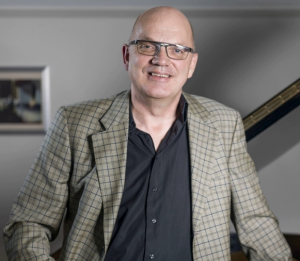
I would like to introduce to you ‘Ammerland’ by Jacob de Haan.
One of the most well-known and world wide played wind band composers of today. The composition is an example of the signature of this composer. As Air for Band, this composition can be used for many occasions. Besides performing it on concerts or occasional meetings, it is also very helpful in training musicality and sound, balance and blend and intonation. It needs a warm tone. Important is the appropriate ebb and flow of each musical phrase.
The composition gives us an impression of the enchanting region by the Zwischenahner Lake! The rural parts of Ammerland combine fields covered with yellow rape blossoms, lush meadows, seemingly endless country roads, and an exquisite lakeside. Let yourself be lured away on a short musical trip to beautiful Ammerland. Enjoy nature, the lakeside, and the brilliant colors of a unique landscape. This warm and rich work is as gorgeous and enchanting as the beautiful lake region of Germany for which it is named. Mid-voices introduce the simple exquisite melody, followed in turn by bolder scoring that invites the entire ensemble to create moments of broad intensity.
Grade 2,5
TWOFACE for wind band – (4.30”) – H.H.-Musikverlag
Hubert Hoche (GER, 1966)
https://www.youtube.com/watch?v=0khx3PFOcUU
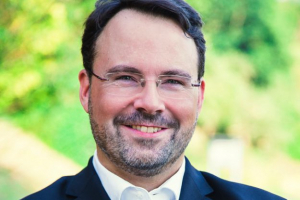
The last piece I would like to suggest is TWOFACE for wind band by German composer Hubert Hoche.
I haven’t programmed it yet myself, but it is on a short list for coming up events. Hubert Hoche wrote to me about his work: “The idea of the composition is reflected in the title. However, it does not mean the antagonist of Batman from the films of the same name, it does not even mean a person, but it hides a socio-critical and time-critical thought. The work was created in a period in which it struck me particularly unpleasantly that in our society it was only about higher, further and above all about faster, faster, faster. The dissatisfaction and exhaustion of the people around me was clearly noticeable. At the same time, however, I remembered two statements made by my professor of choral conducting, Gert Frischmuth, when I became impatient with myself during my studies. He said: “in rest lies strength” and “a steady drop wears away the stone and not a one-time bucket of water”. From these thoughts came the idea of the two-part form of TWOFACE (restless and hectic versus calm and slowly progressing). Tempi were to be chosen so that both parts would last approximately the same amount of time. However, the subjective feeling of the musicians was always that the slow part was perceived as longer, with the 2nd part developing significantly more power for the musicians. The question now arises after which part one feels more comfortable. This thought should quietly stimulate to think.”
Hubert Hoche studied composition and conducting at the University of Music Franz Liszt in Weimar, followed by postgraduate studies in composition. Further studies took place with with Prof. Michel Philippot (Paris), Bernhard Haitink (Luzern) and Jan Cober (Leipzig).
His compositions were often selected for festivals. He also won many composition prices. For example: 1. prize for his composition From Heaven High on the occasion of the composition competition for the 5th German Music Festival 2013 in Chemnitz, awarded by the BDMV and the GEMA Foundation, 2017 first performance of the ballet MYSTIKA with the Policeorchstra Bavaria (conductor Johann Mösenbichler) at the Citytheatre of Fürth-Germany
Besides composing, he is conductor of concert bands and choirs; co-founder of the festival for contemporary music Weimarer Frühjahrstage; founder of the flammabis – contemporary music e.V. and its president since 2000; also, second president of the Komponistenverband-Thüringen e.V.; since 2005 second president of the Tonkünstlerverband Würzburg; member of the board of the WASBE – Section Germany.


